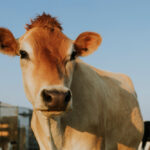Cattle breeding is an important aspect of animal husbandry that requires knowledge, skill, and investment. Whether you own a few cows or are considering starting a commercial beef or dairy herd, understanding the basics of breeding cattle is crucial to success. In this blog post, we’ll discuss what breeding cattle entails, the different breeding methods, and factors to consider when choosing a breeding program. Let’s get started!
Breeding Methods
There are two main methods used in breeding cattle: natural breeding and artificial insemination. Natural breeding involves keeping bulls or steers with cows, thus allowing them to mate freely. This method is economical, but can be risky as the bull may transmit diseases to the herd, and the cow may become aggressive towards humans.
Artificial insemination, on the other hand, involves collecting sperm from a male animal and depositing it into a female animal’s reproductive tract using a breeding gun or catheter. This method eliminates the risk of transmitting diseases and allows breeders to use superior genetics from animals located in different countries.
Factors to Consider
Before breeding cattle, it’s important to consider various factors such as breed selection, age, and health. The breed selection should be based on factors such as the desired end product, adaptability to your locality, and the market demand. The recommended age for breeding a heifer ranges between 14-18 months, while cows can be bred up to 12 years of age. It’s important to ensure the health status of the cow before breeding by conducting tests for diseases such as brucellosis and tuberculosis.
Breeding Programs
Breeding programs are designed to improve the overall genetics of the herd. There are generally three types of breeding programs: purebred, crossbreeding, and composite breeding. In purebred breeding, animals with similar traits are bred to preserve the traits that make the breed unique. Crossbreeding, on the other hand, involves breeding animals from different breeds to achieve hybrid vigor, which results in a more robust and healthy offspring. Composite breeding is a combination of both purebred and crossbreeding, in which breeders create new breeds by crossing different breeds over several generations.
Managing the Breeding Process
Managing the breeding process involves ensuring that the cows are in heat, selecting a bull or semen with desirable traits, and monitoring the pregnancy. Signs of heat in cows include restlessness, frequent urination, and swelling of the vulva. When selecting a bull, traits such as fertility, temperament, and genetic makeup should be considered. Pregnancy can be monitored by using ultrasound or rectal palpation.
Breeding cattle is a complex process that requires careful planning, investment, and management. By understanding the different breeding methods, factors to consider when choosing a breeding program, and how to manage the breeding process, you can achieve a successful breeding program that produces healthy, productive, and profitable cows. Remember to always prioritize the health and welfare of your animals, and seek help from qualified professionals when necessary. Happy breeding!



